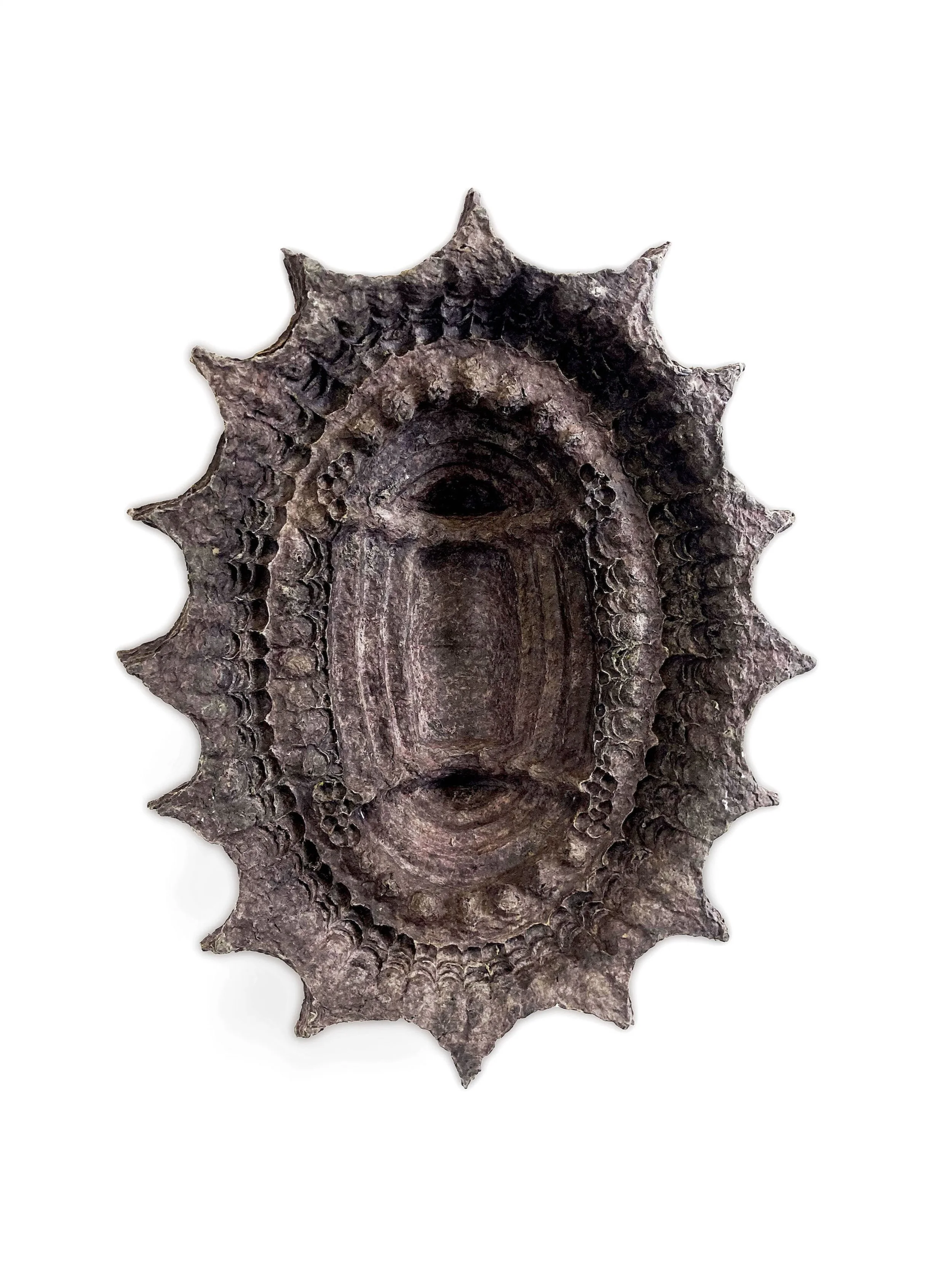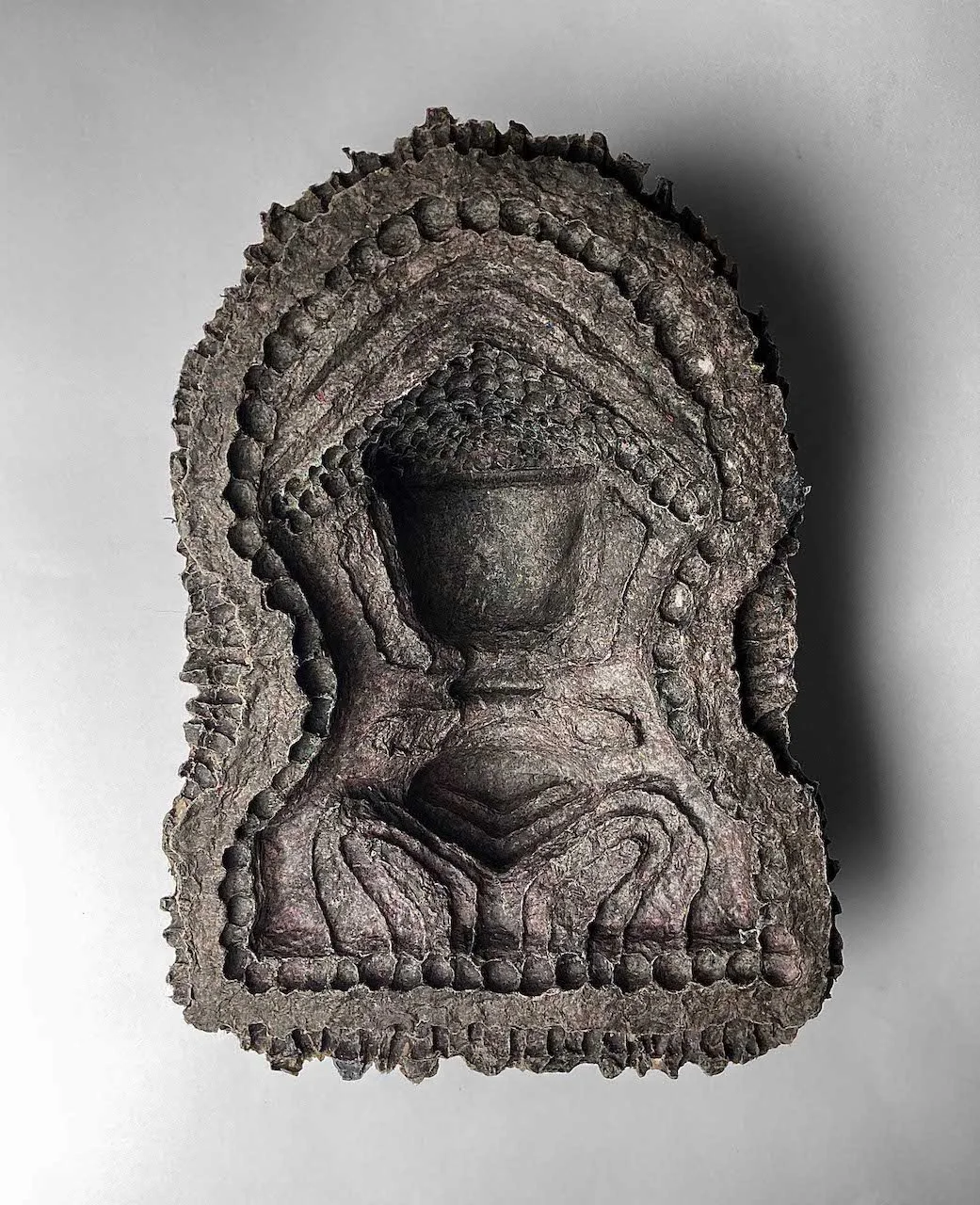MEGAN G. DESHIELDS
Artist Biography
Megan G. DeShields is a visual artist living and working in Detroit, MI. She has a BFA in sculpture from Wayne State University (WSU) and is currently pursuing her MFA with a concentration in sculpture at WSU. Megan uses clay, mold making, and a variety of casting processes to explore themes of grief and absence.
In 2021, Megan was awarded the Thomas C. Rumble Graduate Fellowship, WSU, and is currently a graduate teaching assistant in sculpture. She is the Visual Art Curator for The Michigan Glass Project, a Detroit nonprofit which helps fund art class curriculum in Detroit Public Schools. Her work has been included in exhibitions at 333 Midland, Galerie Camille, Hatch Gallery, Marshall Fredericks Museum, Scarab Club, the Urban Institute of Contemporary Art, as well as other galleries across the region.
Sacred Void, 2023, paper pulp and beeswax
Artist Statement
We live in a time when the presence of loss weighs heavy on our psyche. We experience collective grief in response to the ecological crisis, while being denied the time and space to mourn what has been taken from us.
Grief can be quite complex. Whether losing a loved one, a job, objects, places, or identity, the experience can be traumatic and emotional. Life becomes difficult to navigate and painful to embrace. It’s collective and sweeps you away, grounding you to a universal truth: that our bodies are temporary, and life is intertwined with death.
Investigating the absence of form, I have begun to consider how the objects I create act as containers for grief: psychological reliquaries. When we experience loss, we are hollowed out and hardened, but forced to acknowledge our fragile states of existence. By holding space to grieve, we begin to foster a new relationship with “absence,” one that transforms and heals, both the individual and collective psyche.
Through abstract clay modeling, mold making, and casting in paper, concrete, plaster, and metal, I reference Catholic iconography, Paganism, and Greek Mythology to investigate the intersection of psychology and spirituality. Instead of using the mold to reproduce an object, I am documenting proof of existence. Paper pulp and beeswax, while not practical to the process, carry deeper archaic and historic meaning as modes to preserve history, myth, and the body. My instinct to reexamine the mold came after experiencing the passing of my mother. Since then, I have been using my sculptural practice to visually articulate this void.
Hallow #2(detail), 2022, paper pulp and beeswax
Hallow #2 (detail), 2022, paper pulp and beeswax
Hallow #3, 2022, paper pulp and beeswax
Hallow #5, 2022, paper pulp and beeswax
Hallow#6, 2022, paper pulp and beeswax
Offerings, 2023, cast iron, 2023






